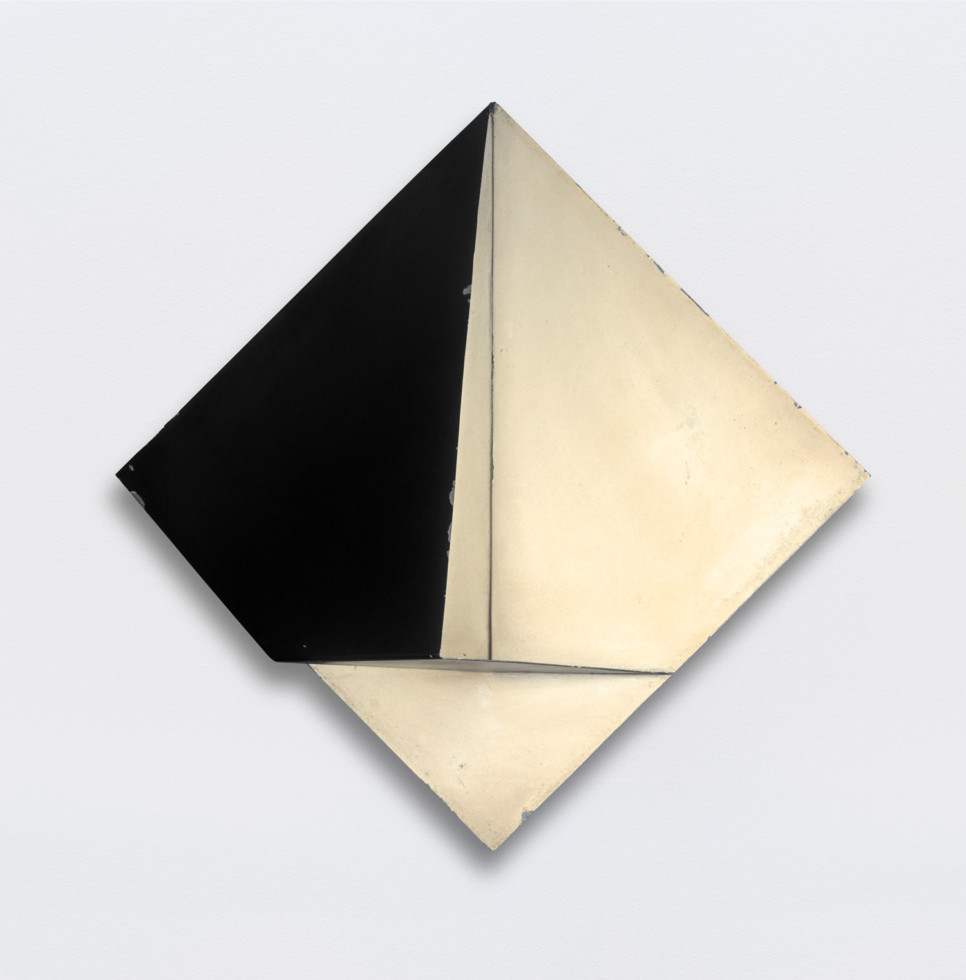
Participating Artists Concrete Matters
Read more about the artists participating in the exhibition Concrete Matters. Here you find short biographies.
GERALDO DE BARROS (1923–1998)
Geraldo de Barros was a Brazilian-born artist who was considered part of the vanguard of photography within Grupo Ruptura and the Concrete movement in Brazil. De Barros received a formal painting education at Associaçião Paulista de Belas Artes and became a member of the Foto Cine Clube Bandeirante of São Paulo in 1949. The same year he began teaching at the Museu de Arte de São Paulo Assis Chateaubriand photo lab.
During a visit to Europe between 1951 and 1952, he studied lithography and engraving in Paris and graphic arts at the Hochschule für Gestaltung in Ulm, Germany, where he also met Max Bill. In 1960 de Barros participated in the exhibition Konkrete Kunst in Zurich. His photography can be seen as an exploration of geometric abstraction, which was later also translated into his painted works. The isolation of shapes distilling geometric forms within his photography and painting inspired de Barros to set up his cooperative Unilabor in 1954, which was dedicated to the design and production of furniture.
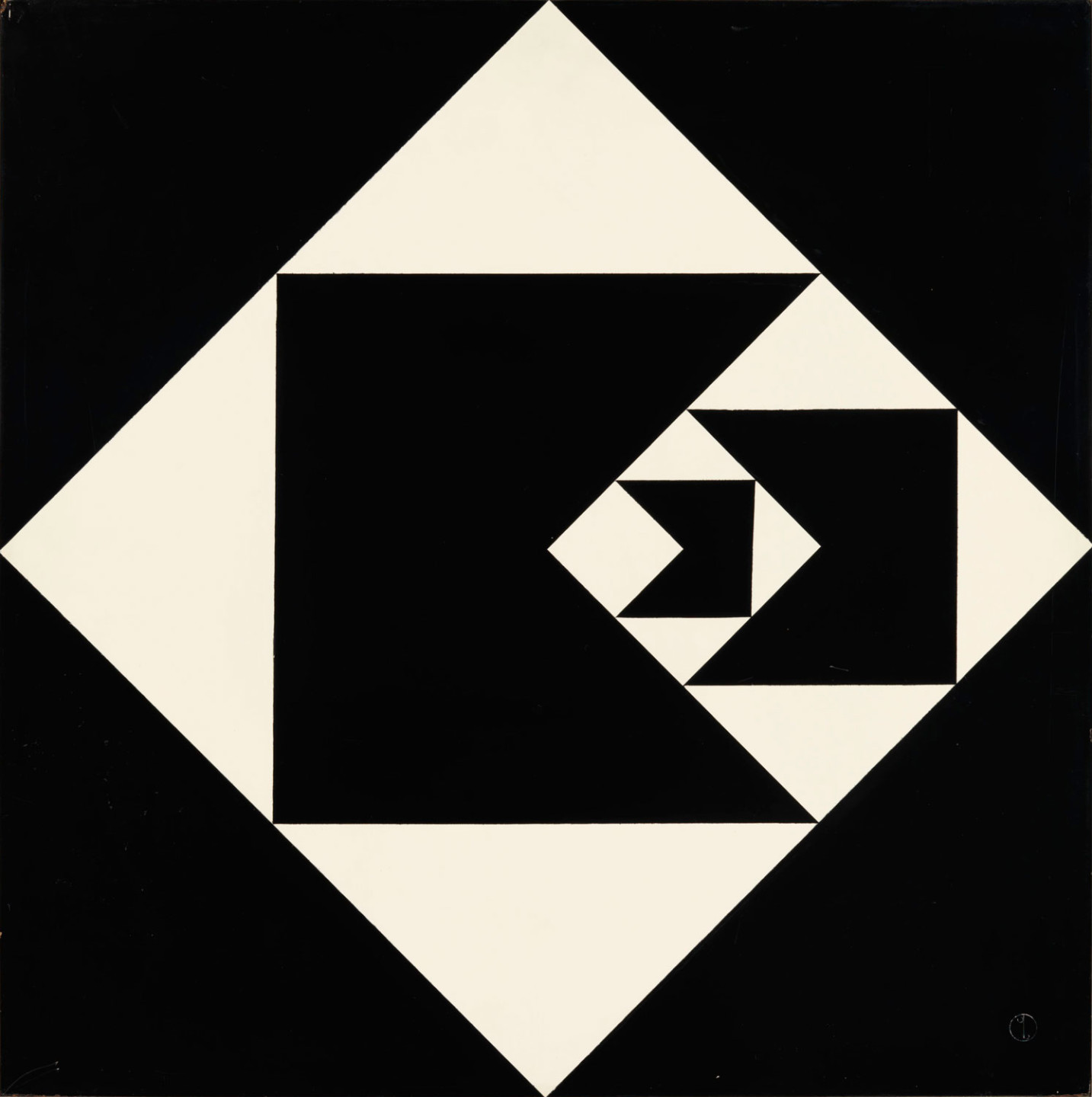
MAX BILL (1908–1994)
Max Bill was an artist, graphic designer, and architect born in Winterthur, Switzerland. He studied at Bauhaus under Wassily Kandinsky, Paul Klee, and Oskar Schlemmer. As a painter, he was a proponent of the non-figurative, purely geometric style in the spirit of Theo van Doesberg and he organized the first international exhibition of Concrete art in Basel in 1944.
In the late 1940s he came into contact with the Latin American art scene through the Argentine artists Tomás Maldonado and Juan Melé, who were travelling in Europe. A retrospective exhibition of Bill’s art in São Paulo in 1951 had a great impact on the Brazilian art world. The following year, he was awarded the first prize at the first São Paulo Biennale in the category International Sculpture, and in 1953 he was one of the founders of the design school Hochschule für Gestaltung in Ulm, Germany. The school built on the heritage of Bauhaus and was in operation until 1968.
As a graphic and industrial designer Bill was a central figure in Switzerland from the 1950s onward, and in 1960 his work was presented at the Zurich exhibition
Konkrete Kunst.
ALUÍSIO CARVÃO (1918–2001)
Aluísio Carvão was a painter, illustrator, and scenographer. In 1952, he enrolled in Ivan Serpa’s painting course at the Museu de Arte Moderna (MAM) in Rio de Janeiro. Carvão was one of the original members of Grupo Frente, which was founded in 1954. His work was shown two years later in the first national exhibition of Concrete art, which took place in São Paulo and Rio de Janeiro.
In 1959, Carvão participated in the Neo-Concrete exhibitions in Brazil. He also took part in Konkrete Kunst in Zurich in 1960, at the invitation of Max Bill, one of the founders of the Bauhaus-inspired Ulm School of Design (Hochschule für Gestaltung). Carvão exhibited there as a visiting artist in 1960 after receiving a prize in the form of a travel grant from Salão Nacional de Arte Moderna.
WILLYS DE CASTRO (1926–1988)
Willys de Castro was a trained chemist when he embarked on his artistic career. He also worked as a graphic designer, scenographer, costume designer, and editor of an experimental theater magazine. He was one of the driving forces behind the Neo-Concrete Movement in Rio de Janeiro, as well as developing the references to pheno menology that became part of the Neo-Concrete credo.
De Castro participated in the exhibition Konkrete Kunst in Zurich in 1960 at the invitation of Max Bill. The following year his work was shown at the second Paris Biennale and in Brazilian Art Today in London. In the course of the same period he made his objetos ativos (“active objects”), paintings that took on a three-dimensional form.
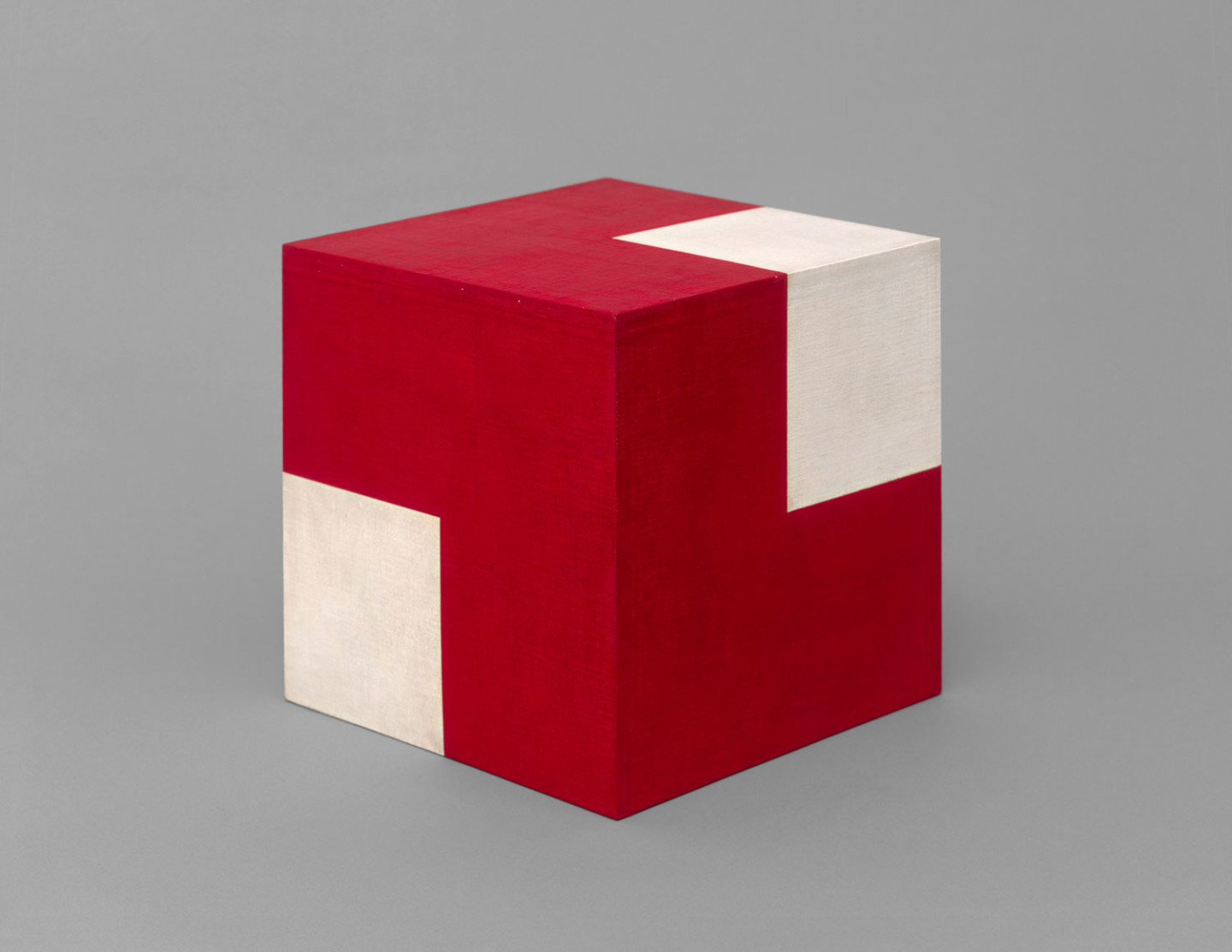
LYGIA CLARK (1920–1988)
Lygia Clark was born in Belo Horizonte, Brazil, and studied landscape architecture with Roberto Burle Marx in Rio de Janeiro and painting with Fernand Léger in Paris. She was part of Grupo Frente and was one of the driving forces behind the conversations that were the foundation of Neo-Concretism in 1959.
Clark’s early paintings were small and monochromatic, but she soon started to challenge the two-dimensionality of the canvas in different ways, work more conceptually and sculpturally and create “relational objects.” Interaction was central to Clark’s art, and in the 1960s she developed her proposições (propositions): gloves, masks, and other objects that stimulated and challenged the senses and were meant to be handled and used by the viewer. Clark is best known for her bichos (critter, beetles, insects), approximately seventy malleable and changeable works made from aluminum discs that are hinged together. In 1960 Clark participated in the group show Konkrete Kunst in Zurich.
WALDEMAR CORDEIRO (1925–1973)
Waldemar Cordeiro was one of the most prominent artists of the Concrete movement in São Paulo. In 1949 Cordeiro emigrated permanently from his native Rome to São Paulo and started making waves in the local art scene.
In 1952 he co-founded Grupo Ruptura, the group, driven by Cordeiro’s theories, that became known for its rationalistic rigor about art production. The Ruptura movement rejected naturalism in favour of an analytical, theoretical, and mechanical approach toward art production. In line with his ideas, his work cannot be pinned down to a specific medium; Cordeiro was an avid writer, journalist, architect, and painter. His work reflects a contemplative relationship in which art and theory are constantly in dialogue. In 1960 Cordeiro’s work could be seen in the international show Konkrete Kunst in Zurich.
CARLOS CRUZ-DIEZ (BORN 1923)
Venezuelan-born artist, illustrator, and designer Carlos Cruz-Diez rose to prominence in his home country primarily as a graphic designer and illustrator for the private sector and the newspaper El Nacional. After a brief stay in Barcelona in 1955, Cruz-Diez became interested in revitalizing abstract art. Upon his return to Venezuela in 1957, he opened his own artistic and graphic design studio.
In Venezuela, his artistic work evolved from being largely language-based to having a greater emphasis on the transformative qualities of color and geometric abstraction. Beyond painting, Cruz-Diez started experimenting with installation and kinetic art, moving the vibrancy from the canvas to the three-dimensional plane. Cruz-Diez has lived in Paris since 1960.
GEGO (1912–1994)
German-Jewish printmaker, sculptor, and architect Gertrud Louise Goldschmidt, best known under her moniker Gego, completed her studies in architecture in Stuttgart prior to fleeing the Nazi regime in 1939. In Venezuela, Gego continued to pursue architecture and furniture design, which gradually led to an interest in fine arts.
In the 1950s, alongside holding teaching positions, Gego turned to abstract drawing. She developed this further in the 1960s by employing materials such as steel wire, paper, and iron to create three-dimensional drawings that both defined volume and revealed the work’s construction. Perhaps her most important works are the Reticulárea, web-like installations of wire that placed abstraction in specific relation to its direct environment.
GYULA KOSICE (1924–2016)
The artist, poet, and theoretician Gyula Kosice was born Ferdinand Falk in Košice – at the time a Hungarian town, now part of Slovakia. He came to Buenos Aires as a four-year-old and was given the name Fernando Fallik upon arrival. In his twenties, he took the name of his home town.
Kosice became a pioneer of Concrete and Kinetic art, working with new materials such as luminous neon gas and water. He was also one of the founders of the magazine Arturo, one issue of which was published in 1944.
In the following years he co-founded the artist group Madí. Madí urged artists to let the principles of the movement permeate all artistic disciplines (music, dance, theatre, literature, architecture, and so on). The emphasis was on movement, development, and diversity. They wanted to free themselves from the strictures of expression, representation, and signification embodied by the older art. In 1960 Kosice participated in the exhibition Konkrete Kunst in Zurich and in 1964 he was commissioned to create Argentina’s pavilion for the Venice Biennial.
JUDITH LAUAND (BORN 1922)
Judith Lauand is a Brazilian printmaker and painter currently residing in São Paulo. Lauand began her education in printmaking and painting at the Escola de Belas Artes in Araraquara in the 1940s and finished in 1950. Lauand is the only woman to have joined the Grupo Ruptura, the São Paulo Concretist movement.
Lauand’s early work explores a combination of linear and geometric shapes, whereas her later work can be seen as more analytical. With the influence of Grupo Ruptura, Lauand’s style from 1954 onward gravitated toward structural lines and optical illusions. She was part of the Exposição Nacional de Arte Concreta in São Paulo and also participated in the exhibition Konkrete Kunst in
Zurich in 1960.
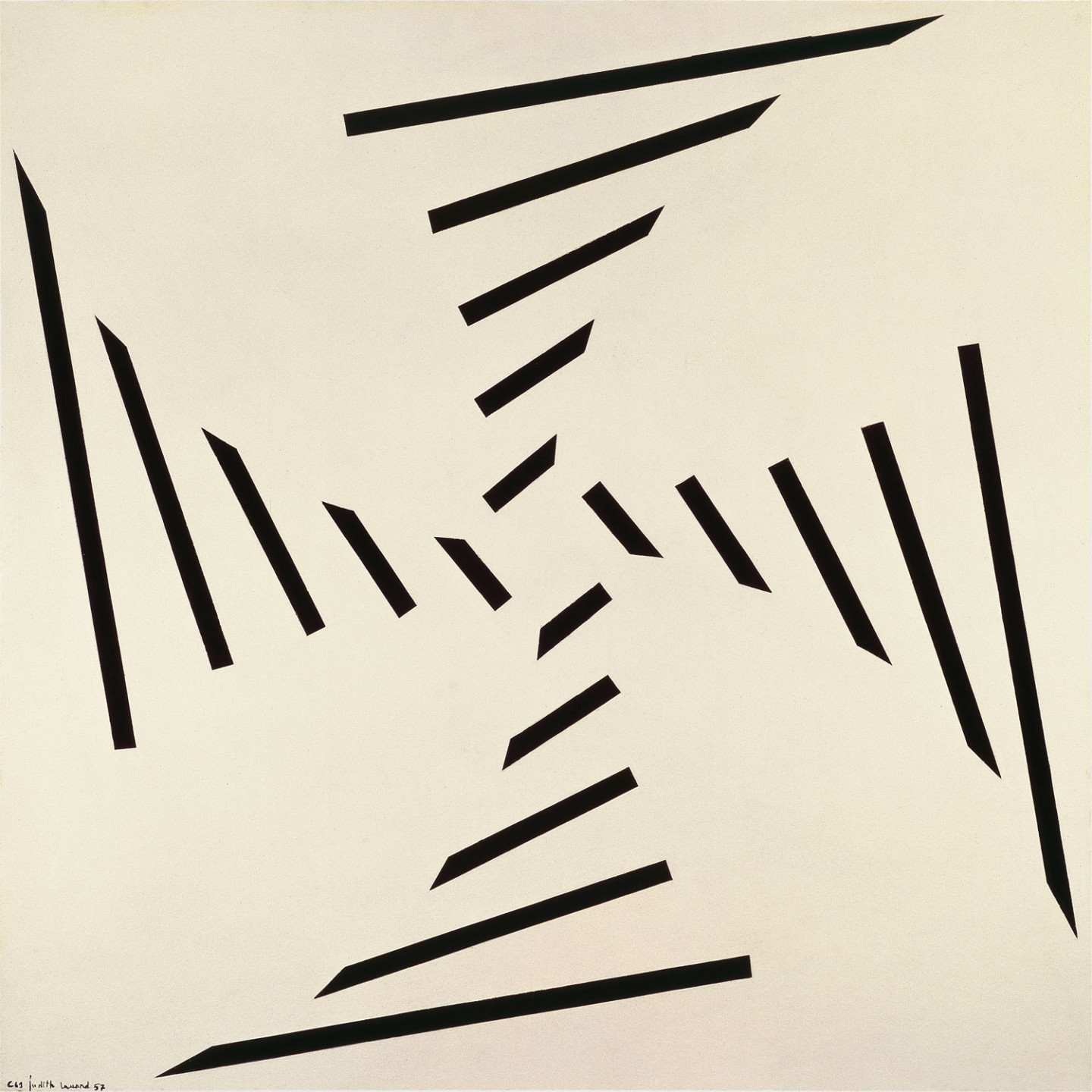
RAÚL LOZZA (1911–2008)
Raúl Lozza was an artist, graphic designer, writer, and theoretician. He was one of the founding members of the group Contrapunto in 1943 and the art editor of the group’s eponymous magazine. Shortly thereafter he was also involved in forming the Marxist Asociación Arte Concreto-Invención in 1945. The group admired Piet Mondrian and Theo van Doesburg’s purist aesthetics. Here he was also one of the editors of the group’s periodical.
Together with Juan Alberto Molenberg he developed coplanar painting. Freestanding planar objects were assembled using metal wires in compositions that floated in front of the underlying wall. In 1947, Lozza and his brother Rembrandt V. D. started their own movement, which they called Perceptismo. They launched the manifesto of the movement in 1949 and published a magazine under the same name from 1950 to 1953.
TOMÁS MALDONADO (BORN 1922)
Tomás Maldonado is an artist, graphic designer, and theoretician born in Buenos Aires but living and working in Milan since 1967. He was a co-founder of Asociación Arte Concreto-Invención in 1945, a group that admired Piet Mondrian and Theo van Doesburg’s purist geometric abstractions. Group members created paintings on irregularly shaped canvases and panels and broke away from traditional painting’s illusionist relationship to the frame as a window on another reality.
By the end of the 1940s, Maldonado returned to the orthogonal format. The Marxist-oriented Maldonado had a revolutionary and utopian artistic vision. He also wanted to apply his principles to other areas of society and began working in industrial design. In 1951 he founded the magazine Nueva Vision (1951 – 59). Following an invitation from Max Bill in 1954, he started teaching at the Hochschule für Gestaltung in Ulm, Germany. Eventually he led the school for a few years. After focusing on writing, teaching, and researching for many years, he began painting again in 2000.
JUAN MELÉ (1923–2012)
The painter, sculptor, and critic Juan Melé was born in Buenos Aires but was part of the international art scene for many years. Melé joined the Asociación Arte Concreto-Invención in 1946, and created coplanar paintings and paintings with irregular frames.
A travel grant took him to Europe, where he studied under Sonia Delaunay and Georges Vantongerloo. He also traveled around Europe and in Zurich he came into contact with Max Bill and other Concrete artists. Back in Buenos Aires, he co-founded Grupo Arte Nuevo in 1955. He also started teaching art and writing art criticism. Between 1961 and 1986 he primarily lived and worked in New York, but from 1990 onward he divided his time between Buenos Aires and Paris.
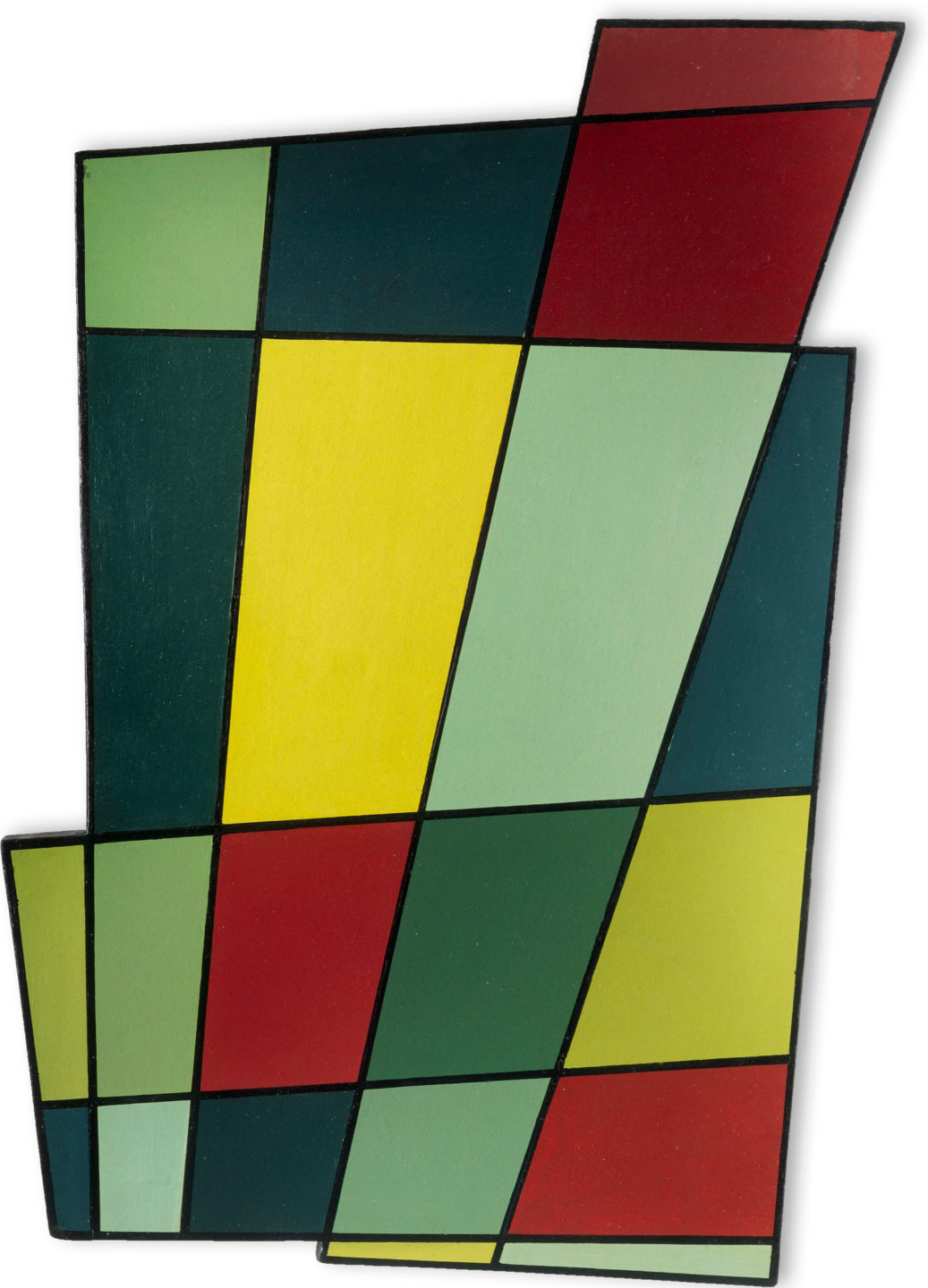
JUAN ALBERTO MOLENBERG (1921–2011)
Juan Alberto Molenberg, born in Buenos Aires, was a member of Asociación Arte Concreto-Invención and participated in a number of exhibitions held by the group. Molenberg is considered to have invented the so-called coplanar artwork in 1946, along with Raúl Lozza. By joining together individual flat geometric objects on a common plane, he solved the problem of the artwork as an illusory space within the unifying outer frame.
In the 1950s he collaborated with the journal Contemporánea. Molenberg also worked as a graphic designer and illustrator who specialized in packaging and logotypes.
HÉLIO OITICICA (1937–1980)
Hélio Oiticica studied painting in Rio de Janeiro under Ivan Serpa. From 1955 he participated in Grupo Frente’s exhibitions and he joined the Neo-Concrete Movement in 1960. With monochromatic paintings that hung freely from the ceiling of the exhibition space, he challenged the two-dimensionality of the picture plane. Oiticica developed ideas centered on activist and complex art presented in social contexts, such as in collaboration with residents of Rio’s favelas.
In 1960 Oiticica’s work could be seen in the exhibition Konkrete Kunst in Zurich. After the military coup in Brazil in 1964 he went into exile in New York. Oiticica wrote in an intricate Portuguese-English inspired by Concrete poetry and influenced by Inca aesthetics and popular culture; he also made films, sculptures, and architectural installations. The installation Tropicália was first shown in 1967 at the Museu de Arte Moderna in Rio de Janeiro and two years later in a solo exhibition at the Whitechapel Art Gallery in London. In 2017, his work was shown in a retrospective touring the United States, entitled To Organize Delirium.
ALEJANDRO OTERO (1921–1990)
Venezuelan painter and sculptor Alejandro Otero started out as a student of Agricultural Studies in the city of Maracay. In 1939, Otero began studying painting, sculpture, and stained-glass art at the Escuela de Arte Plásticas y Artes Aplicadas de Caracas. After finishing his studies in 1945, Otero traveled to Paris on a state scholarship. During this period, he joined the group Los Disidentes. He developed and eventually formalized the abstract geometric painting style he began to work with in the late 1940s.
He would call his later works Colorythms. These works showcase a rhythmic interplay between lines and colors based on an organic practice in which he attempted to achieve a form of unity. Together with Calder, Vasarely, Léger, and Soto, Otero was involved in the art for Carlos Vilanuevas’s newly constructed Caracas University Campus.
LYGIA PAPE (1927–2004)
Brazilian artist and filmmaker Lygia Pape was part of
the Rio-based Grupo Frente before she signed the Neo-Concrete Manifesto in 1959. An early example from the Frente period is the series Relevo (Reliefs), for which painted surfaces were joined to create geometric shapes in relief and incorporate the wall in an optical rhythm.
Pape worked in a wide range of techniques, often in parallel, such as painting, woodcut, sculpture, film, and performance. In 1960 Pape’s work was included in the international exhibition Konkrete Kunst in Zurich. She tested boundaries and experimented with materials, at times in provocative ways like when she showed Caixa das baratas (Box of Cockroaches) in 1967, three years after the military coup, in an exhibition arranged by her friend Hélio Oiticica. In Livro da Criação (Book of Creation, 1959) viewers were invited to create their own narratives based on the loose parts of the book.
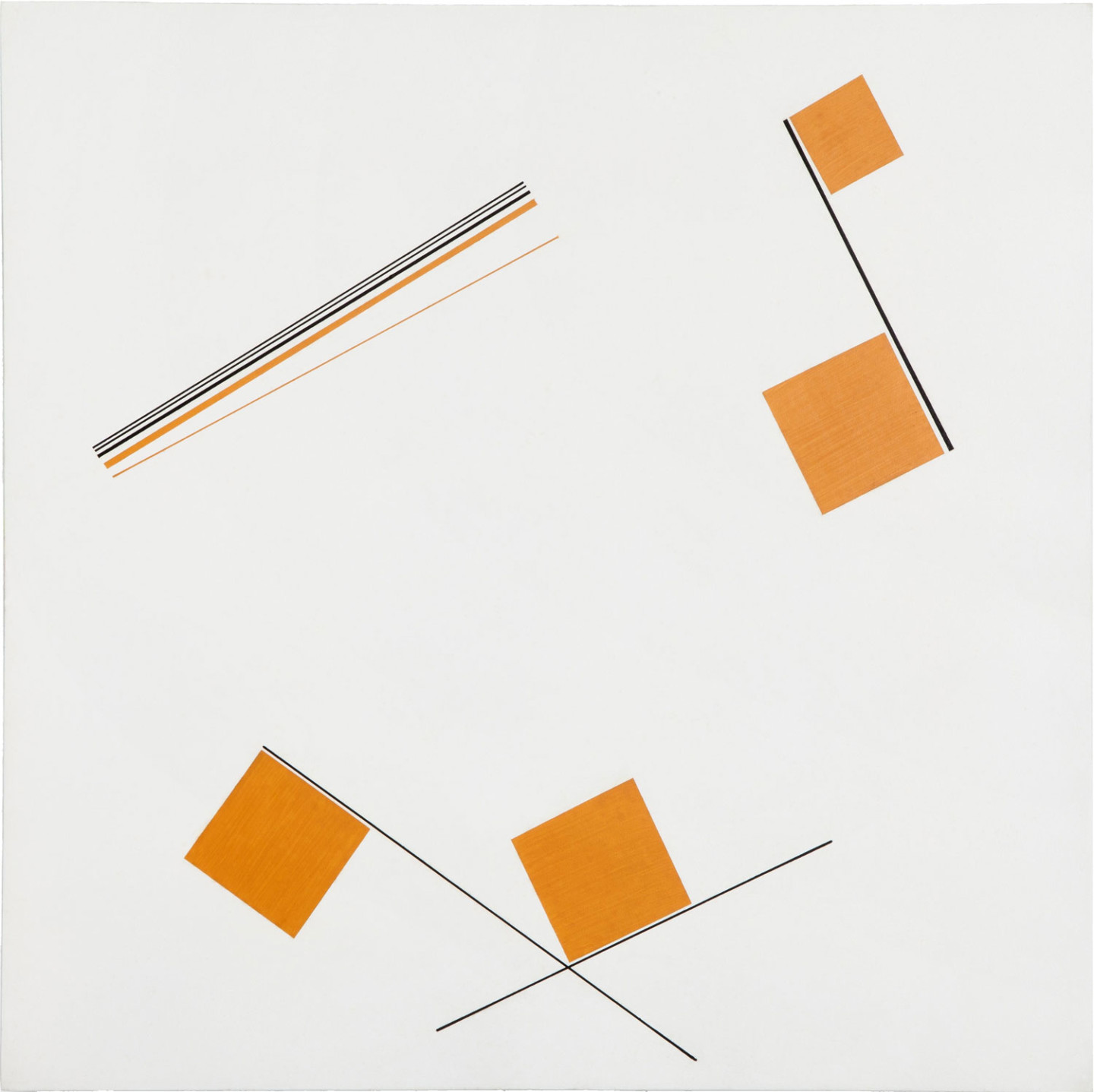
RHOD ROTHFUSS (1920–1969)
Carlos María (Rhod) Rothfuss was an artist and theoretician from Montevideo, Uruguay. He moved to Buenos Aires in 1942, where he joined Argentinian avant-garde circles. In an article about the problem of the frame in contemporary art published in the magazine Arturo, Rothfuss argued that the irregular canvas was the solution to the problem of the inability of painting to break away from illusionism. The edge of the canvas, he suggested, should interact with the painting’s inner composition and be an active part of the work.
Rothfuss participated in Asociación Arte Concreto-Invención’s first two exhibitions before he started the group Madí in 1946 with Gyula Kosice and Carmelo Arden Quinn. In the second half of the 1940s, Rothfuss created sculptures with mobile elements.
LUIZ SACILOTTO (1924–2003)
Born near São Paulo, Luíz Sacilotto enrolled in the Escola Profissional Masculina in São Paulo at the age of fourteen, later continuing his painting studies at the Escola Técnica Getúlio Vargas until 1943. While working as a technical designer at architecture studios, he co-founded Grupo Expressionista in 1945, through which he cemented his expressionistic style. He departed from this when joining Grupo Ruptura in São Paulo 1952.
Sacilotto developed his painting style primarily by experimenting with geometric shapes on canvas, all with the title Concreção and an individual number. His sculptures take on a monochromatic and linear approach to geometric abstraction, achieving the effects of an optical illusion.
MIRA SCHENDEL (1919–1988)
Mira Schendel was born in Switzerland and was raised a Catholic in Italy despite her family’s Jewish roots. In 1939, she lost her citizenship and was forced to flee to Sarajevo. She returned to Italy in 1946, only to move to Brazil three years later. From 1952 onward she lived in São Paulo, where she explored non-representational forms of expression in painting, sculpture, and drawing without belonging to any specific group.
Schendel had studied philosophy and was interested in theology, metaphysics, phenomenology, and Zen Buddhism. Many of her works explore how the line influences and activates the surrounding empty space. From the early 1960s onward, thin, translucent rice paper was a recurring element in Schendel’s work. In the series Droguinhas (Little Nothings) (1964 – 66) it was twisted into three-dimensional lines that challenge the very notion of drawing.
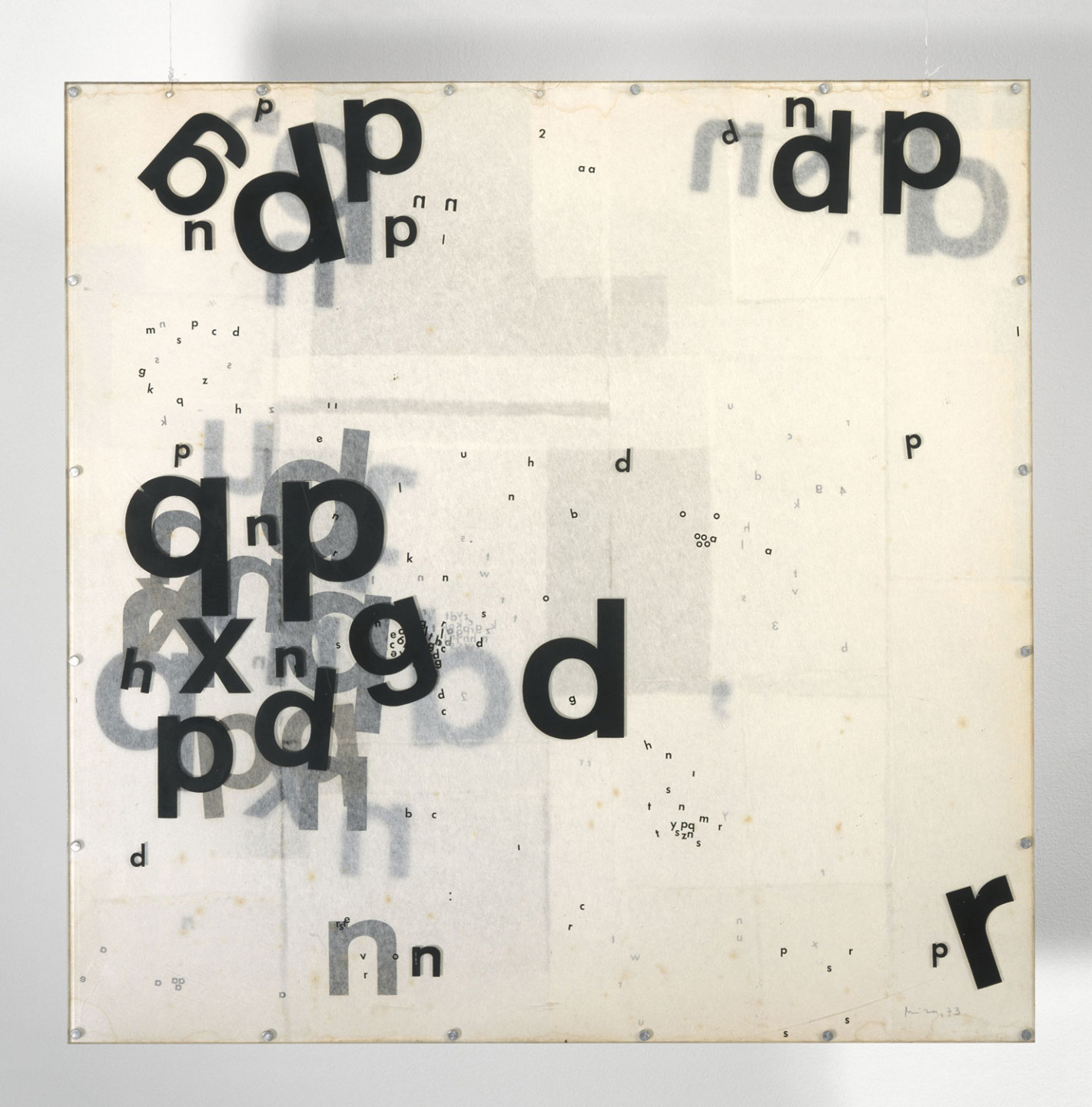
IVAN SERPA (1923–1973)
Ivan Serpa lived and worked in Rio de Janeiro and was one of the founders of Grupo Frente (1954 – 57). With its freer attitude, Grupo Frente stood in opposition to the São Paulo-based Grupo Ruptura’s more rationalistic interpretation of Concretism. Prior to that, Serpa had worked as an art therapist for psychiatric patients. He held art courses at the newly opened Museu de Arte Moderna in Rio de Janeiro and taught painting, sculpture, and theory to a growing number of interested people of different ages, including professional artists.
Of the fifteen artists in Grupo Frente, all but four had been taught by Serpa at some point. Serpa participated in the São Paulo Biennale on several occasions and the first time it was held, in 1951, he received the Young Artist Award. The following year his work was shown at the Venice Biennale.
JESÚS RAFAEL SOTO (1923–2005)
Jésus Rafael Soto studied at the Escuela de Artes Plásticas y Artes Aplicadas de Caracas in 1942 and became the director of the Escuela de Bellas Artes in Maracaibo, Venezuela, in 1947. In 1950 Soto moved to Paris, where he began to explore kinetic experiences, perception, and movement in his works. In 1958 Soto made Vibraciones, a kinetic mural with wires that seemed to move as audiences passed by. Soto became interested in the notion of “dematerialization,” presenting artworks beyond the Morbergconfines of space and time.
Throughout his career he sought to actively involve spectators, resulting, in the late 1960s, in his Penetrables, where the spectator is invited to move through the plastic strips that form the installation. He participated in Le Mouvement at Galerie Denise René in 1955, in Konkrete Kunst in Zurich in 1960, and in the exhibition Rörelse i konsten at Moderna Museet in 1961.
JOAQUÍN TORRES-GARCÍA (1874–1949)
Joaquín Torres-García was a central figure in the Latin American art scene. He moved from Montevideo to Catalonia with his family when he was young. In Barcelona he met Pablo Picasso, as well as Joan and Julio González. He also worked on glass windows for Antoni Gaudí’s large church project.
After living in New York, Italy, and southern France, he moved to Paris, where he was introduced to Neo-Plasticism by Theo van Doesburg and Piet Mondrian. He also tried to start a Constructivist movement in Madrid shortly before returning to Montevideo in 1934. That same year, a large retrospective exhibition comprising over two hundred of his works was held in Montevideo. The following year he founded Asociación de Arte Constructivo (AAC), and from 1936 to 1943 he published the art review Círculo y Cuadrado.
Torres-García wanted to bridge the gap between classical and modern art with his work. He brought together the abstractions of Constructivism and American pre-Colombian art and took these ideas in a new direction, which he called Constructive Universalism. He continued to propagate his ideas though the studio Taller Torres Garcia that he directed from 1944 onward.
RUBEM VALENTIM (1922–1991)
Rubem Valentim was born in Salvador da Bahia and grew up in São Paulo. Traces of his birthplace’s African heritage can be seen in his colorful paintings, woodcuts, and sculptures. Their geometric visual language incorporates ritualistic symbols and totems that are characteristic of Afro-Brazilian culture.
Valentim was a trained dentist but he took up painting and later completed a degree in journalism. He was a self-taught artist and member of a group that worked toward the artistic renewal of Bahia. After moving to Rio de Janeiro in 1957, Valentim was awarded a travel scholarship in 1962 that enabled a long sojourn in Europe. He returned to his homeland in 1966, invited by the art school in the newly established capital city Brasilia. In 1998, a part of Parque de Esculturas at the Museum of Modern Art in Bahia was dedicated to his memory.
FRANZ WEISSMANN (1914–2005)
Franz Weissmann was born in Austria but moved to Brazil at the beginning of the 1920s. In 1939, he began studying art and architecture at Rio de Janeiro’s Escola Nacional de Belas Artes. Weissmann obtained Brazilian citizenship in 1948 and taught sculpture at the Escola do Parque in Belo Horizonte from 1944 to 1956. In 1955 he joined the Rio-based Grupo Frente and exhibited with them. In 1959, he signed the Neo-Concrete Manifesto and participated in the exhibition Konkrete Kunst in Zurich in 1960.
In the early 1960s, Weissmann went on numerous journeys to Asia and Europe, returning to Rio de Janeiro in 1965. His first abstract works were influenced by Max Bill, but throughout his production he alternated between abstraction, expressionism, and informalism. He experimented with the transformation of different forms, and used iron, stainless steel, zinc, plaster, and aluminum, as well as color, to create visual effects. He was awarded the sculpture prize at the fourth São Paulo Biennale in 1957 and in 1972 he participated in the Venice Biennale.
ANATOL WŁADYSŁAW (1913–2004)
Anatol Władysław was born in Warsaw, Poland, but emigrated to Brazil in 1930 at the age of seventeen. Formally trained as an engineer, he became interested in painting through studying the work of his contemporary Lucy Citti Fereirra.
Prior to joining the São Paulo-based Grupo Ruptura in 1952, Władysław’s paintings showed a more figurative, Impressionistic style. In contrast to his fellow Ruptura peers, Władysław’s emphasis in painting was not on structure, but rather on color. Although there are similarities in how he tackled geometric abstraction, Władysław distinguished himself by employing warm, organic colors. His alliance with Grupa Ruptura was short-lived; in 1954 he left due to his “emotional temperament.” His stylistic and personal outlook in relation to the Ruptura movement has made it difficult to place him within the context of Brazilian art history.




